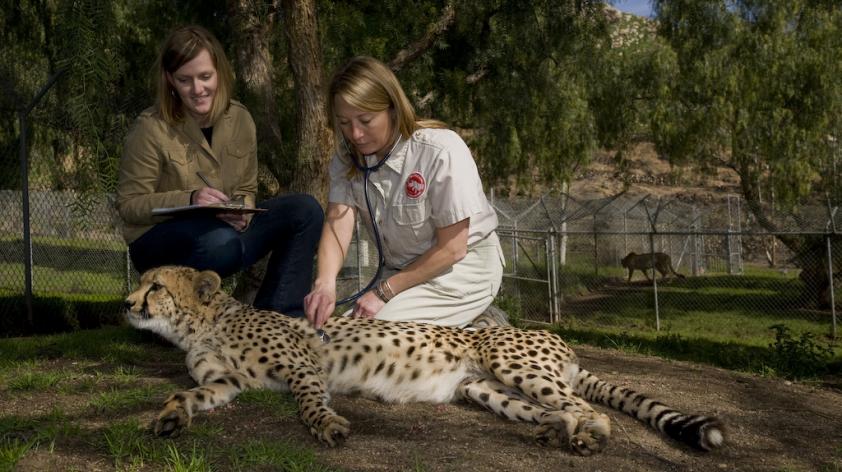
Improving health with science: The story of Teensey and the herpesvirus
A year ago, we were saddened by the death of our beloved 10-year-old cheetah, Teensey. Our veterinarians made the tough decision to euthanize Teensey after she was hospitalized for several days from a severe feline herpesvirus infection and showed no signs of improvement.
Feline herpesvirus is an upper respiratory infection in cats. Domestic cats, especially those originating in shelters, commonly have the virus, which usually manifests as a mild runny nose, watery eyes, and sneezing. Like all herpes viruses, an infected cat cannot be cured. The virus will often remain dormant, but may “flare up” and cause sneezing or other common-cold-like symptoms from time-to-time.
Cheetahs can get the same feline herpesviruses that infect domestic cats; however, the manifestation of disease is more variable and problematic. Many cheetahs will have mild signs similar to the domestic cat disease that include watery eyes and sneezing.
However, some cheetahs will develop severe manifestations of the disease, which may include ulcers in the eye and on the skin as well as pneumonia.
Unfortunately, Teensey was one of the cheetahs to develop a severe herpesviral infection that, at least partially, contributed to her death. Why did she develop a severe form of the disease?
To understand the causes of feline herpesvirus infection in cheetahs, San Diego Zoo Global is leading the largest research study ever conducted on clinical feline herpesvirus in cheetahs. In collaboration with 5 other North American breeding institutions, we are using medical data to follow nearly 150 cubs forward through time to identify how many cheetahs are getting infected and what are the major determinants of disease.
The Journal of the American Veterinary Medical Association reported some of our findings in a peer-reviewed publication this month. In this study, we showed that the disease is quite common, with 35% of cubs showing signs in early life, often during the first month. Most of the infections are mild and self-limiting. We did not find an association with the mom’s disease status and that of her cub, which likely means that more cheetahs are carriers (i.e., carry and spread the virus without any consequence to the animal) than we know.
Teensey was included in our study as a cub, and at the time she had no signs of a herpes infection. Could she have gotten the virus as a cub and did not show signs until later in life? Or did she only contract the virus when she was older? What factors could have predicted Teensey’s severe infection?
These are just a few of the questions that we hope to answer in our ongoing research into the epidemiology of feline herpesviruses. Teensey may no longer be with us, but her medical data will continue to contribute to population-level research that improves our ability to prevent, treat, and understand this important disease in cheetahs.













